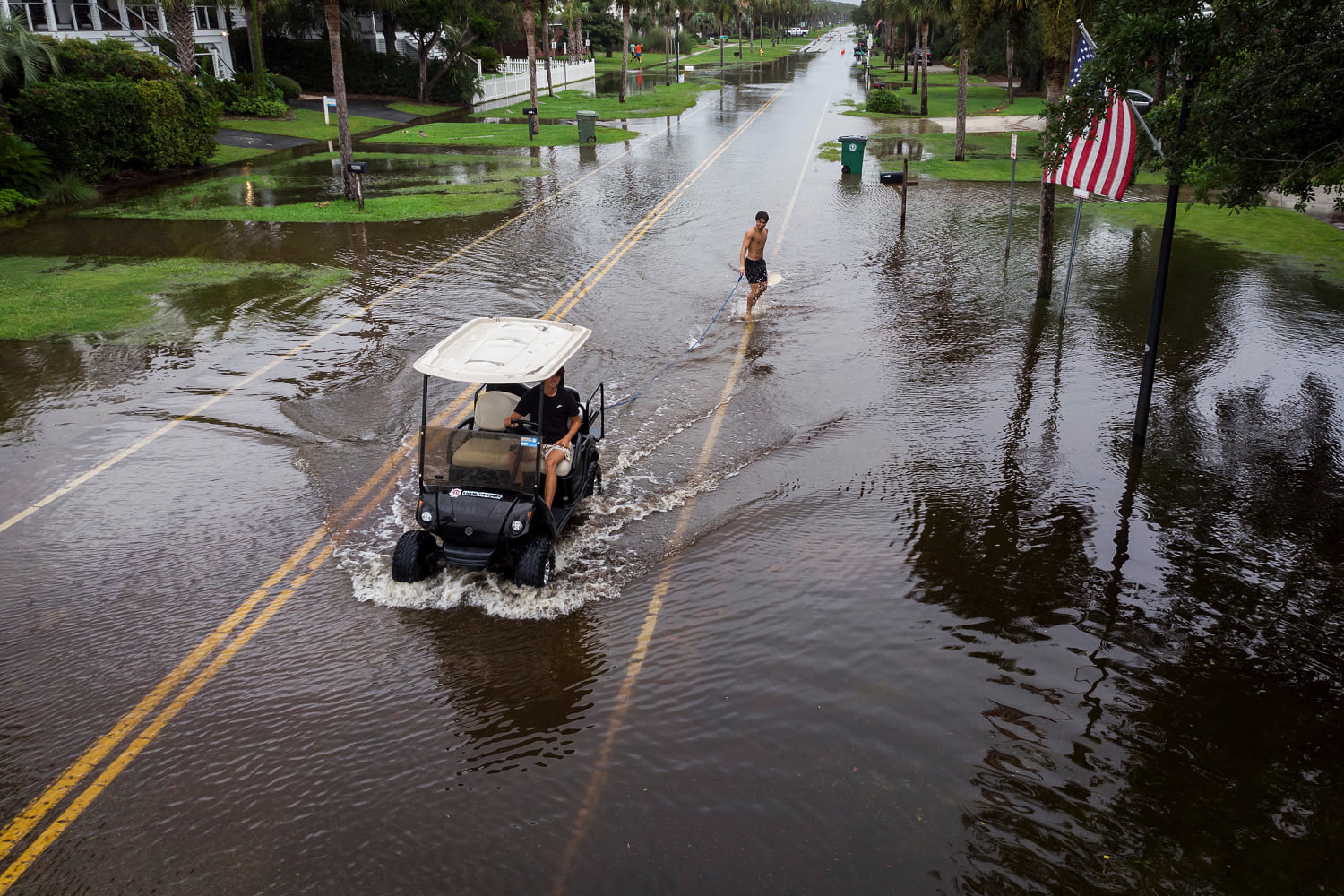
In one Savannah neighborhood, firefighters used boats to evacuate some residents and waded through floodwaters to deliver bottled water and other supplies to those who refused to leave.
Michael Jones said water gushed into his home Monday evening, overturning the refrigerator and causing furniture to float. Outside, the water seemed to be everywhere and was too deep to flee safely. So Jones spent a sleepless night on his kitchen table before firefighters going door to door came in a boat Tuesday morning.
“It was hell all night,” Jones said.
In Charleston, Mayor William Cogswell said the road closures have kept businesses and homes from unnecessary damage and avoided the need for any high-water rescues.
“We especially don’t need any yahoos driving through the water and causing damage to properties,” Cogswell said.
Up to 15 inches of rain was expected in some places in the Carolinas, totals that are close to what the region saw in a historic flood from Hurricane Matthew in 2016. Two years later, many of those records were broken during Hurricane Florence. Both storms killed dozens.
North Carolina and Virginia have both declared a state of emergency.
“The effects of Debby are far-reaching, and our neighboring states are facing significant challenges,” Virginia Gov. Glenn Youngkin said.
Several areas along North Carolina’s coastline are prone to flooding, such as Wilmington and the Outer Banks. Virginia could see impacts including strong winds, heavy rains and flooding.
Debby’s center was more than 30 miles southeast of Savannah on Tuesday night, according to a bulletin from the National Hurricane Center. It had maximum sustained winds of 40 mph and was heading east at 5 mph.
“Tropical cyclones always produce heavy rain, but normally as they’re moving, you know, it doesn’t accumulate that much in one place,” said Richard Pasch, of the hurricane center. “But when they move very slowly, that’s the worst situation.”
There will be lulls in the rain as dry spells appear between bands around the center of the poorly organized storm, forecasters said. But some bands will be heavy and keep moving over the same places.
Green Pond in rural Colleton County, South Carolina, reported the most rain so far, just over 14 inches (36 centimeters). A nearby dam had water run over its top but did not crumble, while trees and washouts blocked a number of roads, county Fire-Rescue Assistant Chief David Greene said.
Close to a foot fell down-coast from Charleston to Savannah, where the National Weather Service reported 6.68 inches just on Monday. That’s already a month’s worth in a single day: In all of August 2023, the city got 5.56 inches.
Tornadoes knocked down trees and damaged a few homes on Kiawah Island and Edisto Island.
Crooked Hammock Brewery in North Myrtle Beach, South Carolina, decided to close early Tuesday.
“Flash flooding is super unpredictable, and we’d rather our staff and guests be home and safe,” marketing coordinator Georgena Dimitriadis said.
